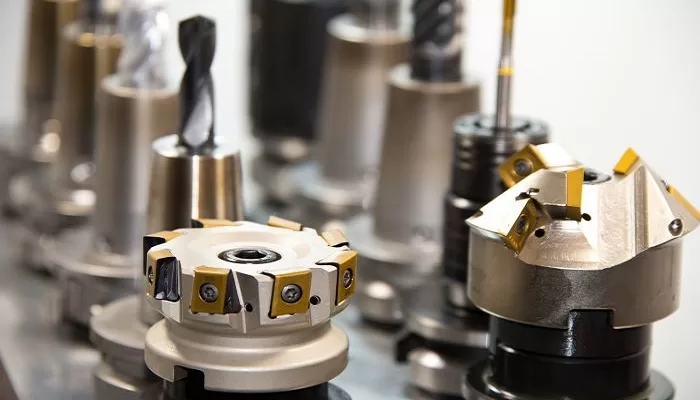Technology
The Fundamentals of CNC Prototype Milling and Everything Else You Should Know

Rapid prototyping can significantly turn an idea into a finished product for product designers and developers. CNC machining and 3D printing allow designers to iterate prototypes to quickly test new designs and materials.
Rapid prototyping is putting together prototypes that work or don’t work using digital manufacturing technologies. With these technologies, digital CAD files can be turned into physical prototypes in a short amount of time. That means that businesses can make prototypes quickly and for less money than they could with traditional methods.
This article explores how prototype manufacturing helps organizations save money and time while producing higher-quality results during the product development process.
How Does Rapid Prototyping Work?
The term “rapid prototyping” (RP) refers to a set of methods for producing a working model of a product, component, or assembly in a short amount of time using 3D CAD files. Most of the time, these parts or assemblies are made using techniques called “additive fabrication” and “subtractive fabrication”. Typical additive manufacturing is 3D printing and subtractive CNC machining.
Prototyping is a great way to use additive manufacturing. It lets you make almost any shape you want, doesn’t need any tools, and can produce parts with mechanical properties close to those of materials made with traditional methods.
Subtractive manufacturing is a better choice for prototypes requiring tight tolerances.
An Overview of the Rapid Prototyping Process
It’s essential to know how much the procedure will cost, how long it will take, how fast it will go, and how accurate it will be. RP uses many different ways to make things. It makes things by casting, molding, extruding, printing, and machining at high speeds.
There are other ways to make prototypes besides additive manufacturing.
- In the compressive method, a semi-solid or liquid material gives it a specific shape. Before casting or molding something, you must go through the process.
- Subtractive is another way to get the right shape by carving the material. To cut the material in this way, force is needed.
Why Is CNC Milling A Good Option For Prototyping?
CNC machining suits the prototyping stage, but that’s not saying much. It is the technology used when prototyping processes need to be done.
For the CNC milling prototype, a computer controls how the cutting head and workpiece move. This movement can be held at minimal intervals, which is impossible with other prototyping methods.
The first step in CNC prototyping is to make a 3D CAM model of the final product. The model is turned into a CAD file once it is finished. The G Code and M code are put into CAM files, which are made from CAD files. The G code controls movement, and the M code contains how coolant flows through the CNC machine.
What Is The Process Of CNC Milling?
CNC milling is a way of making things by taking away material. First, a metal or plastic block is fixed inside the CNC mill. The CNC machine is set up to quickly mill parts from the union of raw materials using G-code.
Plastic parts that have been milled are often left as-milled, which means that the tool marks are still visible. There are more ways to finish metal parts, like anodizing and chromate plating.
What Are The Benefits Of CNC Prototype Milling?
When deciding whether to use other prototyping methods or CNC machining centers for prototypes, think about these pros of CNC machining:
Repetition and the Sameness
A CNC prototype can be made repeatedly. That means that any finished product made with CNC machining will be the same as any other finished product made with the same process. CNC is suitable for prototype machining centers because it can make the same thing over and over again.
A Lot Of Accuracies
CNC machining gives you tight tolerances and high accuracy because you have much control over how the cutting tools move. Also, because the machining process is accurate, manufacturers know that any flaws in the prototype are caused by design, not by the CNC prototyping stage itself.
Process That Saves Time
You don’t need a mold or other time-consuming steps for CNC prototyping. Because of this, it is a fast process. Because CAM/CAD files can be changed, machining centers can change the prototype, run it through CNC machining again, and get it back quickly.
Cost Reduction
In the long run, CNC prototyping that works well saves the manufacturer money. That is because any mistakes or flaws can be fixed in a small batch of prototypes instead of finding and fixing problems in many finished parts during the production stage.
Material Versatility
Unlike other ways of making things, like 3D printing, CNC prototype machining can use a wide range of materials that are easy to machine. You can choose from the strongest metals, alloys, wood, and plastics. So, it is advantageous that the prototype process can be carried out with the same material as the finished product.
Overall, CNC prototype milling is a highly accurate, versatile, and cost-effective method of rapid prototyping. It allows for the creation of complex shapes and tight tolerances, as well as the use of a wide range of materials. By using CAD/CAM software and CNC machines, manufacturers can quickly and efficiently produce multiple iterations of a prototype, allowing for design modifications and improvements to be made before moving on to production. It saves both time and money in the long run, as any issues can be addressed in the prototyping stage rather than during full-scale production.

















































